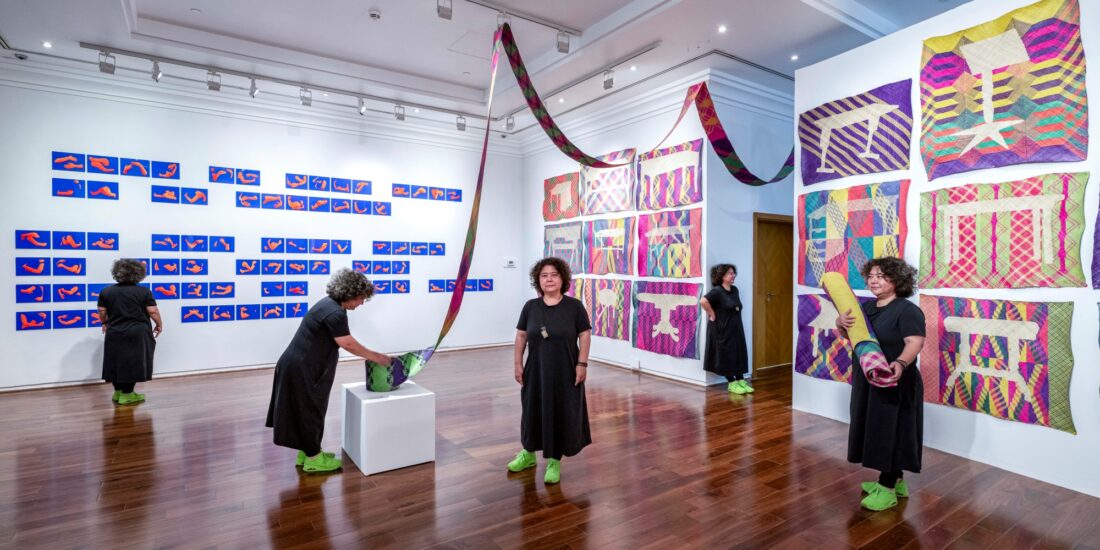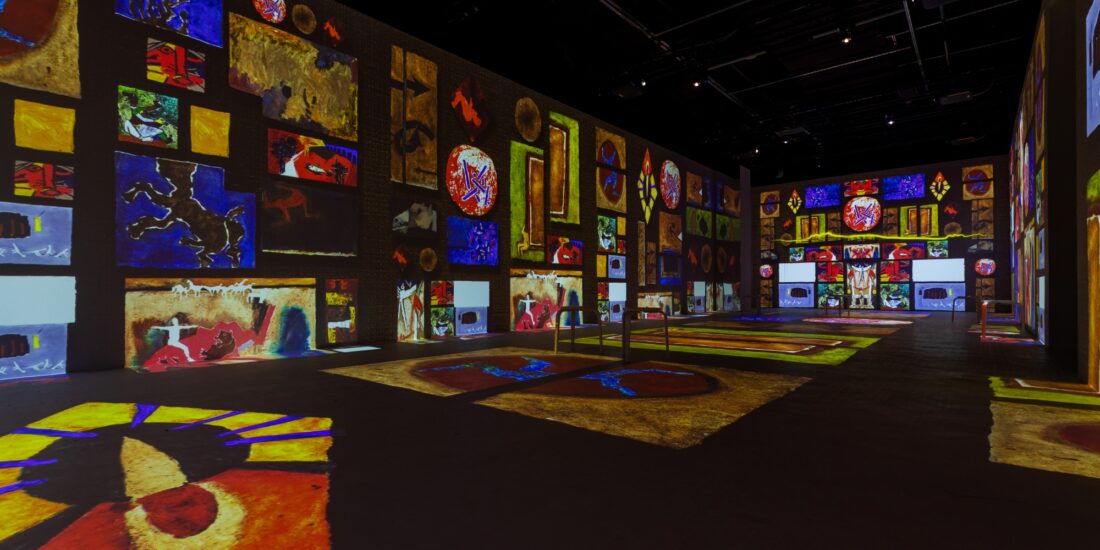YA 3ASAL: Sarah Returns to VCUarts Qatar
The Gallery at VCUarts Qatar presents YA 3ASAL, a solo exhibition by British-Sudanese artist and designer Sarah Elawad, on view from August 28 to October 9, 2025. The exhibition transforms the gallery into a space of shared memory, where sweets, candies, biscuits, cakes, baklawa, kaa’ak, become vessels of memory, cultural connection, and joy.
 Sarah Elawad, who studied at VCUarts Qatar before earning her MFA at Yale, brings her multidisciplinary practice of collage, textiles, video, garments, installation, and print into an immersive narrative on hospitality, belonging, and love.
Sarah Elawad, who studied at VCUarts Qatar before earning her MFA at Yale, brings her multidisciplinary practice of collage, textiles, video, garments, installation, and print into an immersive narrative on hospitality, belonging, and love.
The title YA 3ASAL (يا عسل), a common Arabic phrase of endearment meaning “Hey, honey!”, captures the exhibition’s affectionate tone and exploration of how small gestures, like offering sweets to guests, embody deep cultural values of care and connection.
The show builds on a pivotal memory: as Sarah recounts, a young girl once handed her a caramel at Eid prayers in New York, sparking a vivid recollection of her childhood home filled with guests and the scent of bakhoor. From that moment grew an exhibition that asks: What was the last sweet thing you ate? What’s your favourite person’s favourite sweet?
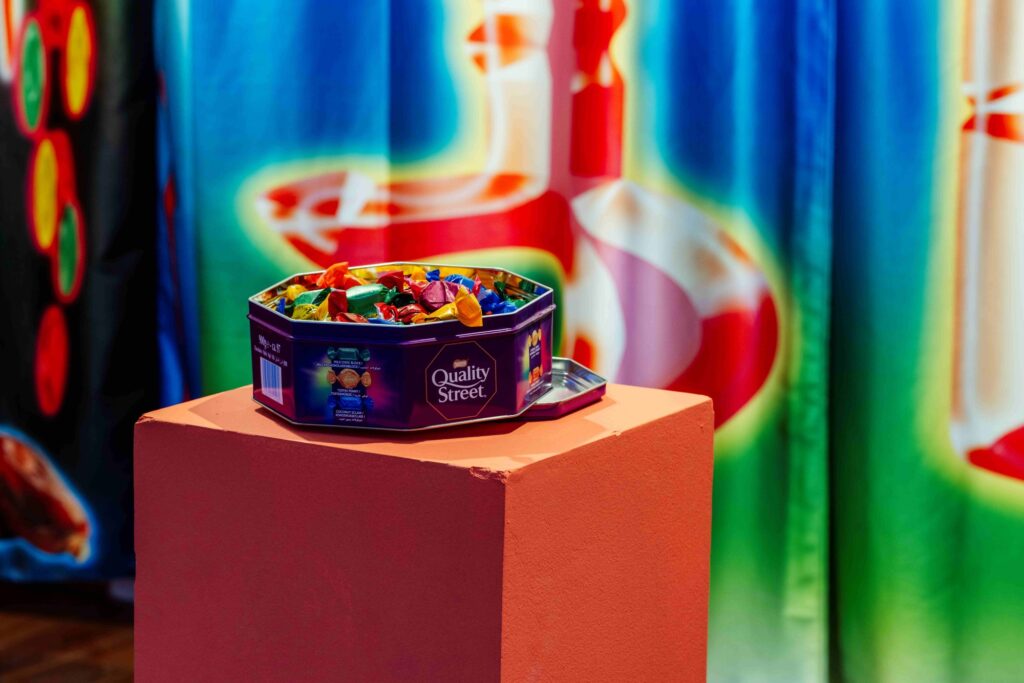
YA 3ASAL
Curated by Chase Westfall, Director of Exhibitions and Programs, and Dina Alkhateeb, Associate Curator of Campus Projects at The Gallery, the exhibition expands beyond nostalgia to address larger questions of identity, belonging, and collective joy.
“Sarah’s work is visually lush and emotionally resonant,” says Chase Westfall. “She has a remarkable ability to translate personal memory into collective meaning, inviting us to feel, remember, and reflect through the universal language of sweets and care.”
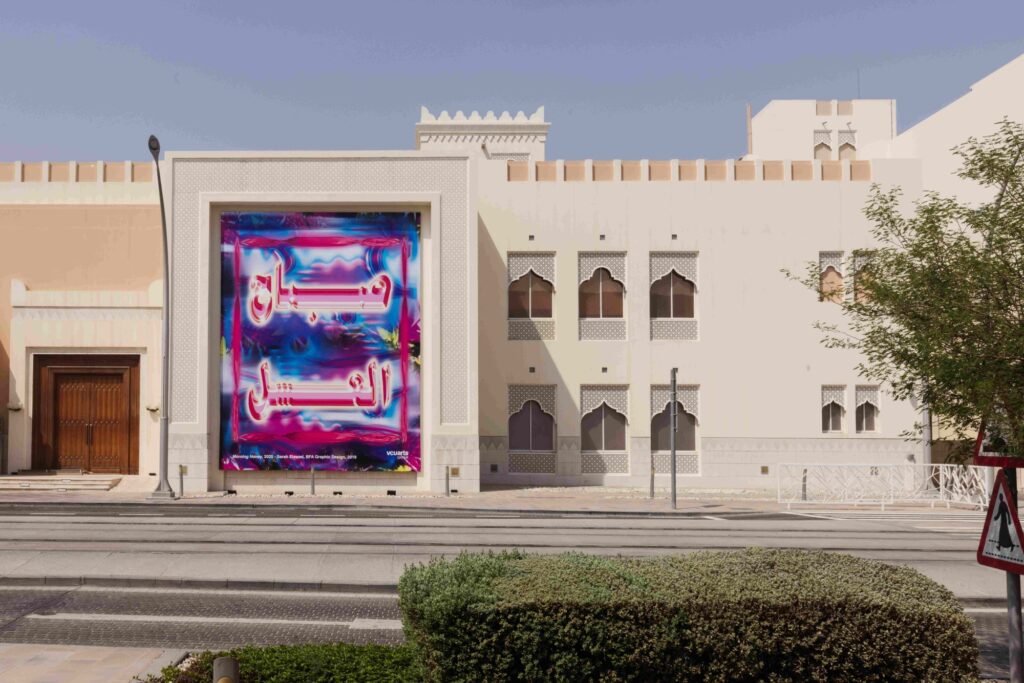
The Gallery at VCUarts Qatar presents YA 3ASAL
In this conversation with SCALE, Sarah reflects on the inspirations, personal stories, and evolving practice behind YA 3ASAL.
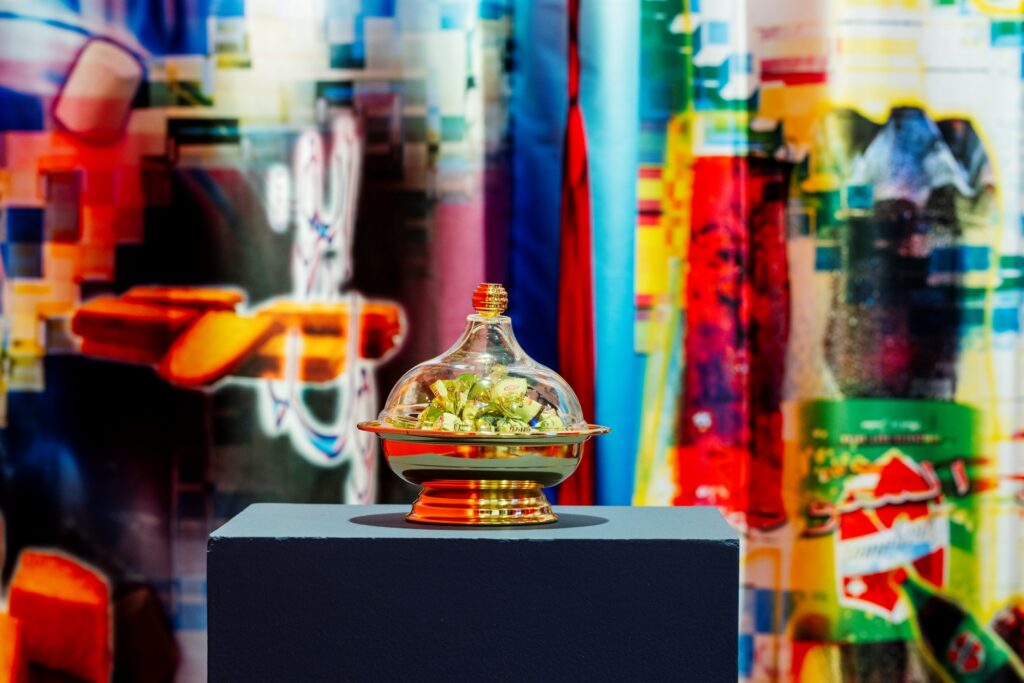
YA 3ASAL
SCALE: YA 3ASAL translates to “Oh Honey,” a phrase of endearment in Arabic. What drew you to this title, and how does it reflect the themes of the exhibition?
Sarah: This exhibition focuses on expressions of love and hospitality through sweet things, and I felt that the phrase “YA 3ASAL” encapsulated that perfectly. It’s a term of endearment by likening a person to honey, it’s like saying “I love you as much as or more than I love honey” and I think that’s lovely.
SCALE: Your work often celebrates beauty, love, and cultural heritage. How do these elements manifest in this exhibition, and what stories are you hoping to tell?
Sarah: This show is about all things sweet and the memories they bring, whether it takes you back to a day from your childhood when guests came over, or reminds you of the corner shop that sells your favourite chocolate bar, it’s about the love or joy certain sweet treats can remind us of or make us feel. The visuals are inspired by the warmth that is felt through the giving and sharing of candies, biscuits, cakes, baklawa, kaa’ak etc. as well as the vibrant packaging a lot of them come in.
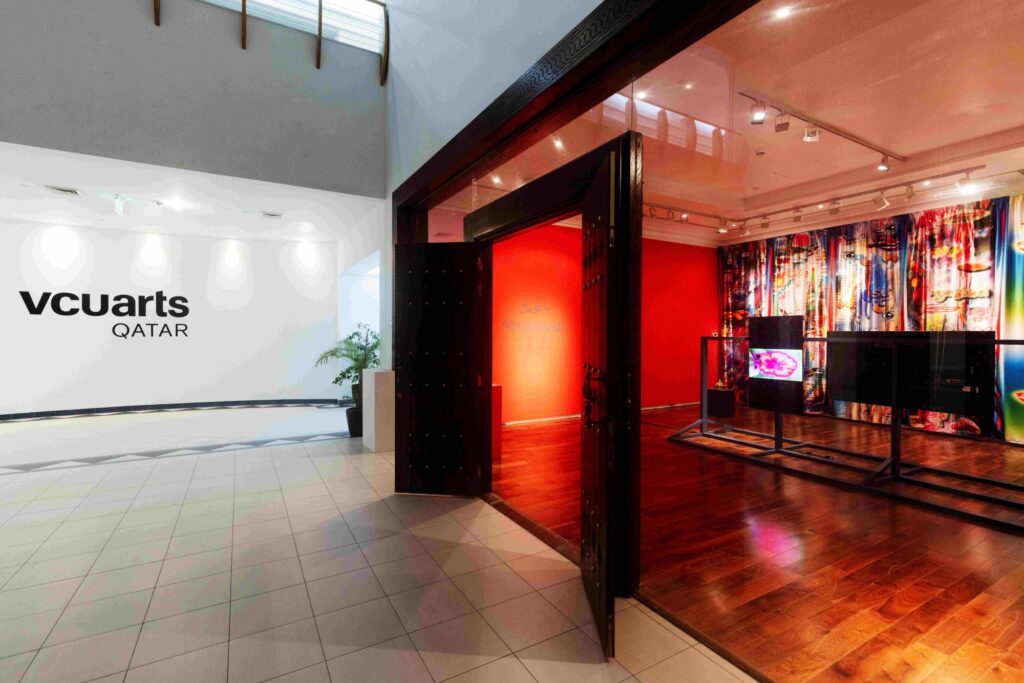
The Gallery at VCUarts Qatar
SCALE: As a British-Sudanese artist who studied at VCUarts Qatar and later Yale, how have your educational and cultural experiences shaped the way you view identity and belonging in your practice?
Sarah: I have lived in many different parts of the world and I also ascribe to different identities. I am Sudanese, Arab, Black, Muslim but I am also from the UK and lived there for most of my life. For a long time, I used to feel a tension between my identities and in turn, a lack of belonging. But after a lot of deep reflection, and honestly, making a lot of art work about it, I’ve come to embrace and celebrate the different parts of me that make me who I am. All the travel I have done has always meant that I am near loved ones and far away from them pretty much everywhere I go, and I highlight this in my work by making work about connection and communication across borders and by finding slices of home, love and family in other things, for example: sweets from my childhood.
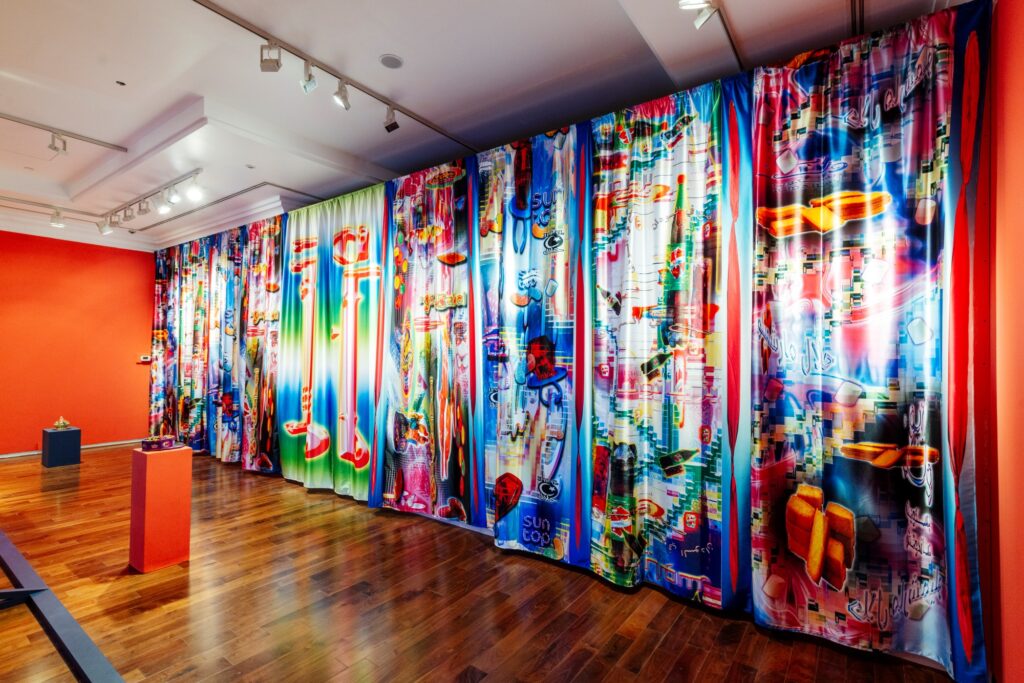
YA 3ASAL
SCALE: The exhibition foregrounds interpersonal relationships. Could you share how personal experiences or family stories influence your creative process?
Sarah: I got the idea for this exhibition while I was at Eid prayer in New York at Washington Square Park and a little girl handed me a Quality Street caramel round and I thought “I haven’t seen one of these in years” and as I chewed it I felt like I was transformed back into my childhood living room with the faint smell of bakhoor in the air as my mum hurries around to get the house together for the guests arriving. I started to think about how close memory and food are intertwined but also about how connections are made through these foods and specifically sweet foods. I was away from family at a time I would have loved to be around them but the taste of this candy had brought me back to being around them and it’s what prompted me to think more about how sweet things are used in our culture to create connections and express love and joy.
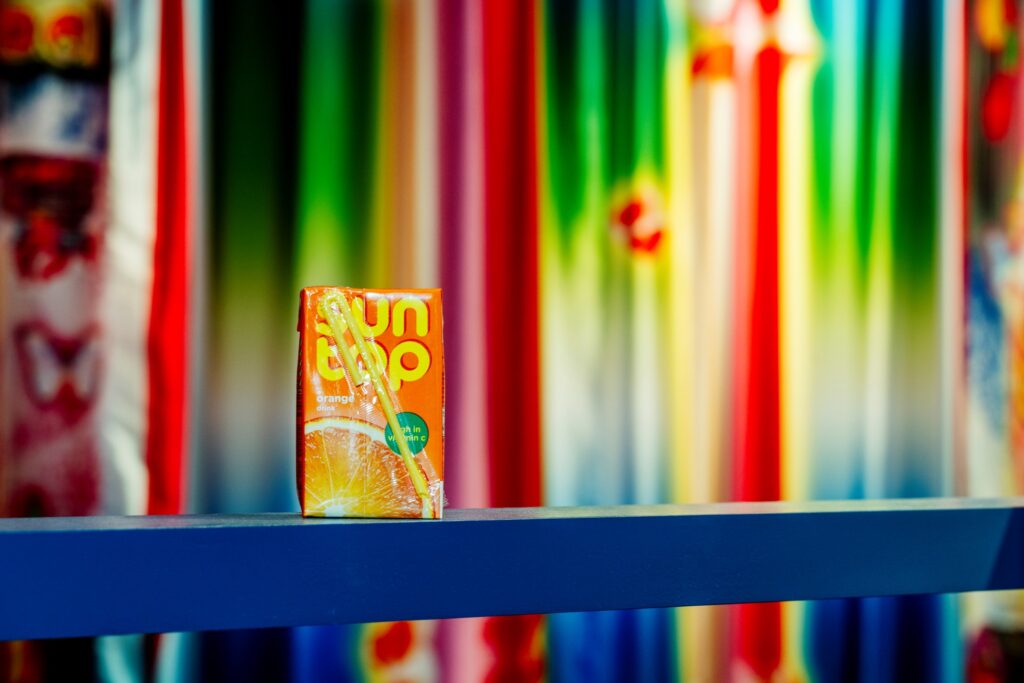
YA 3ASAL
SCALE: As an alumnus of VCUarts Qatar now returning as an exhibiting artist, how does it feel to present your work in the same space where your artistic journey began?
Sarah: It feels exhilarating. I think if you told me while I was a student there that I’d one day have my own solo show exhibiting my work in that space I would have thought you were insane. It’s such an honour to be back to show my work and get to engage with students. It feels like a full circle moment for me and I am so grateful for it.
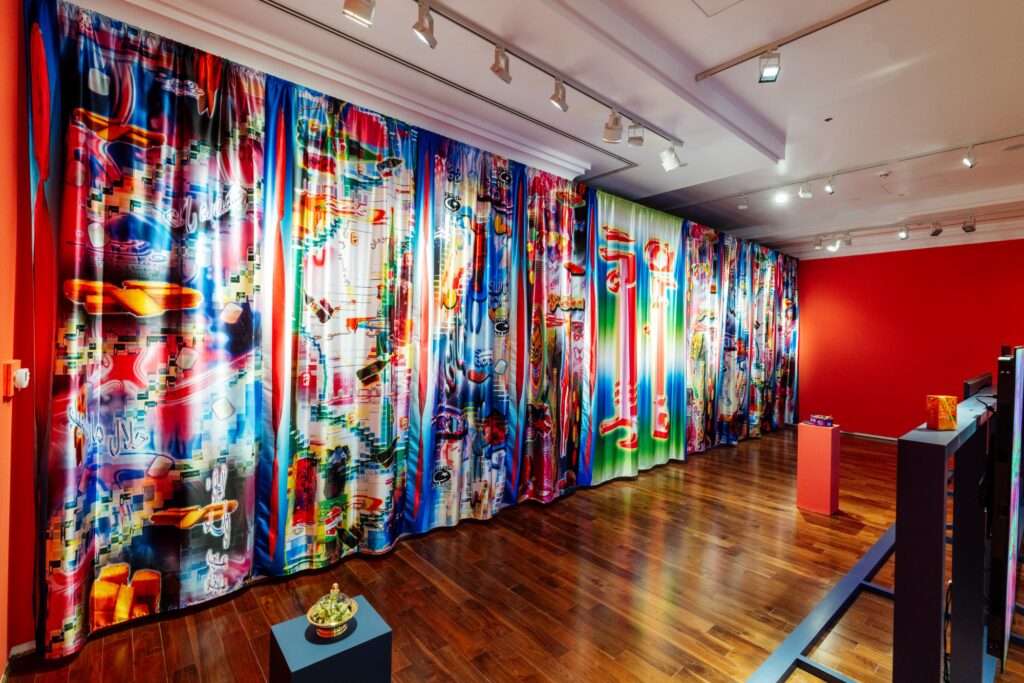
YA 3ASAL
SCALE: Looking ahead, how do you see your practice evolving?
Sarah: I’m hoping to launch my own fashion line at the end of this month and that is a world I am quite unfamiliar with but really excited to step into. I think I will also always be an artist and make art alongside other things but I am excited to see how working in fashion influences my art practice and hopefully brings a new layer of ways to experiment with textiles too.
SCALE: Your practice engages with vernacular culture, or what is sometimes referred to as “kitsch.” How does your academic training as a designer inform the playful, populist aesthetic of your work?
Sarah: So much of what I was taught in graphic design feels quite different from how I create work now. The emphasis was often on “less is more” or “simplicity is key,” shaped by the Bauhaus and other traditions of Western graphic design. While that approach has never really worked for me, personally, I value having learned it. I think it’s important to understand the rules in order to break them. My current visual practice has moved in another direction, but my education continues to inform me in meaningful ways. Most importantly, it nurtured my ability to think critically and to engage in discussion. At Yale, I spent my first year making everything I felt compelled to make, and in my second year I worked closely with faculty to articulate what exactly that was and why it mattered. That process of reflection and articulation has been invaluable to my practice.
All Images Courtesy VCUarts Qatar.


